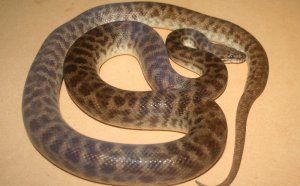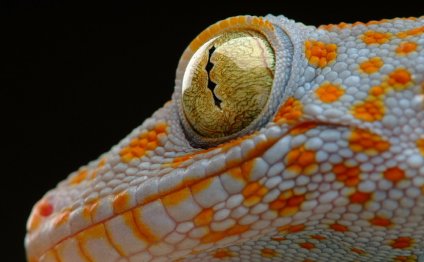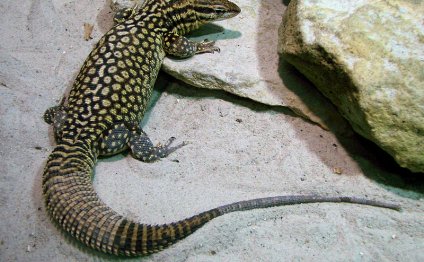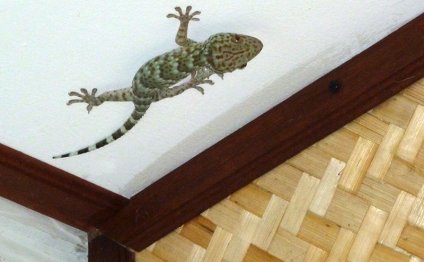
Small geckos as pets
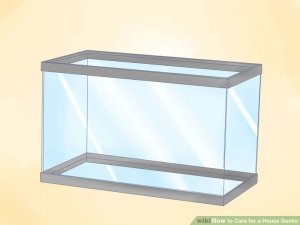 Housing.A single house gecko will be happy in a 5–10 gallon (18.9–37.9 L) tank. If you want to house more than one house gecko in the same enclosure an extra five gallons will need to be added per gecko, for example: for two geckos you will need a 10 gallon (37.9 L) tank, for three geckos you will need a 15 gallon (56.8 L) tank, for four geckos you will need a 20 gallon (75.7 L) tank, and so on. Never house more than one male in the same tank as they may fight. Being as these types of geckos are arboreal, enclosure height is more important than width. Your tank should also be made escape proof for the fact that house geckos can fit through very small openings.
Housing.A single house gecko will be happy in a 5–10 gallon (18.9–37.9 L) tank. If you want to house more than one house gecko in the same enclosure an extra five gallons will need to be added per gecko, for example: for two geckos you will need a 10 gallon (37.9 L) tank, for three geckos you will need a 15 gallon (56.8 L) tank, for four geckos you will need a 20 gallon (75.7 L) tank, and so on. Never house more than one male in the same tank as they may fight. Being as these types of geckos are arboreal, enclosure height is more important than width. Your tank should also be made escape proof for the fact that house geckos can fit through very small openings.
Heating/Lighting. Heat is a very important part in a reptiles life; if a reptile does not have enough heat they may become inactive and ultimately may become sick or die from an upper respiratory infection, if a reptile has to much heat they may overheat and become sick or die. Heat plays crucial part in a reptiles life, and if done wrong may lead to a sick reptile or worse. your house gecko('s') overall temperature should be around 85ºf-90ºf (29ºc–32ºc) at the warm end and about 78-80(25ºc–27ºc) at the cool end. Night temperatures should stay around 78ºf-80ºf (25ºc–27ºc). Make sure you provide a cool and a warm end in their enclosure to assist with thermal regulation. Appropriate temperatures can be achieved by using a small low wattage heat lamp on one end of the of the tank. You may also use a side or under tank heater for your tank. Never use a heat rock. These are outdated and can cause severe burns and even death. A blue heat lamp may be used to control nighttime temperatures. No UV lighting is required for house geckos as they are nocturnal, but some people say it makes a small difference.
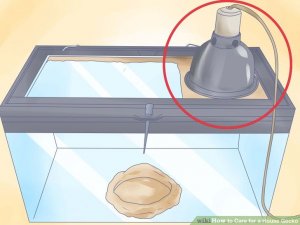 The substrate should be coconut fiber (coconut fiber helps with the humidity). The substrate should be at least 3 inches (7.6 cm) deep as they typically create a small divot or burrow for their eggs. Be sure to use terrarium earth or calcium based substrate, which is easy to digest if consumed while lunging for prey. Mix in some coconut or palm fern husk to aid with maintaining humidity.
The substrate should be coconut fiber (coconut fiber helps with the humidity). The substrate should be at least 3 inches (7.6 cm) deep as they typically create a small divot or burrow for their eggs. Be sure to use terrarium earth or calcium based substrate, which is easy to digest if consumed while lunging for prey. Mix in some coconut or palm fern husk to aid with maintaining humidity.
The next thing you will need are hides as house geckos are nocturnal they will need a dark place to sleep in during the day. There are two ways to go about this, one is the pet store way, and the other is the cheap way. The pet store way is buying hides from the pet store, the cheap way is making your own hide often by making an entry way in a small container. also be sure to have a hide on the cool side of the tank and another on the warm side. If housing more than one gecko be sure to have one hide per gecko plus an extra. You may also want to use fake vines to help with humidity as well as a place for you gecko to climb and hide in.
Humidity/Shedding. Some house geckos are a tropical species therefore they need a humid environment. They need around 70%-90% humidity, Which can be manipulated by using a misting bottle or automatic mister and the earlier mentioned substrate mixture. The house geckos prevalent in the southwest United States (Hemidactylus turcicus) are quite accustomed to a much lower humidity and therefore need only the available humidity provided via the substrate. Be sure if using a misting bottle be sure its never been used for chemical purposes.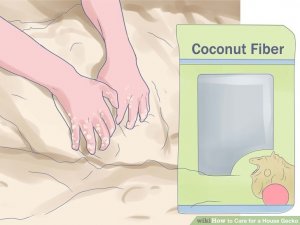 You will also need a moist hide which can be made by cutting an entry way in a small container and placing peat moss inside and misting. This is needed for shedding and also help control the humidity. There is no set rate for how often a reptile sheds and as house geckos get older they do not shed as often as a younger house gecko.
You will also need a moist hide which can be made by cutting an entry way in a small container and placing peat moss inside and misting. This is needed for shedding and also help control the humidity. There is no set rate for how often a reptile sheds and as house geckos get older they do not shed as often as a younger house gecko.
Choose Your House Gecko. When choosing your gecko be sure he/she is healthy and active. Be sure that it is eating on a regular basis, be sure that it is defecating on a regular basis and normally, also be sure it is not showing signs of lethargy and weakness.
Feeding/Water. You may not want to feed your gecko the first day you get it for it may not eat the food. The rule of thumb for house geckos is if its prey is longer than the width between the eyes it is too big. A newborn house gecko will do good on a diet of pinhead crickets, fruit flies, and small mealworms. An adult house gecko should be fed every other day, and should be fed about two crickets. Avoid mealworms as they have a relatively low level of nutrients as compared to crickets or cockroaches & molt quickly into darkling beetles. Plus the chitosan based exoskeleton is hard to digest; especially with the newborn geckos. These geckos will typically not drink from standing water. Therefor you should mist the enclosure walls with an RO or distilled water to allow the inhabitants the chance to lick the water beads from the walls and various other items that collect the water beads.
Size/Lifespan. A house gecko may grow to be as long as 3–7 inches (7.6–17.8 cm). Their lifespan may be anywhere from 3-10 years.
Handling. It is not recommended that house geckos be handled for it can stress them out and they may drop their tail (although they do grow them back). They should only be handled if you need to remove them out of their tank for cleaning. You should wash your hands before and after handling any reptile, for you may have bacteria on your hands that may cause illness.
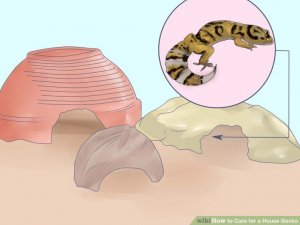
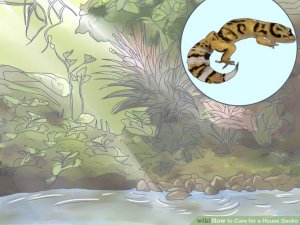

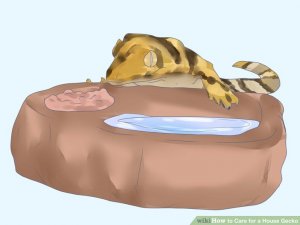
RELATED VIDEO

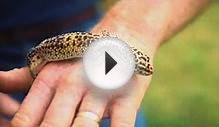
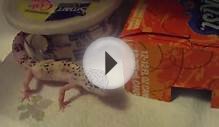
Share this Post
Related posts
Colorful lizard
A very large species of chameleon that is endemic to forests in eastern and northern Madagascar. They reach up to 68 cm (27…
Read MoreSmall snakes as pets
Do some research. Find out everything you possibly can about your snake, take into account the lifespan, size of tank and…
Read More
